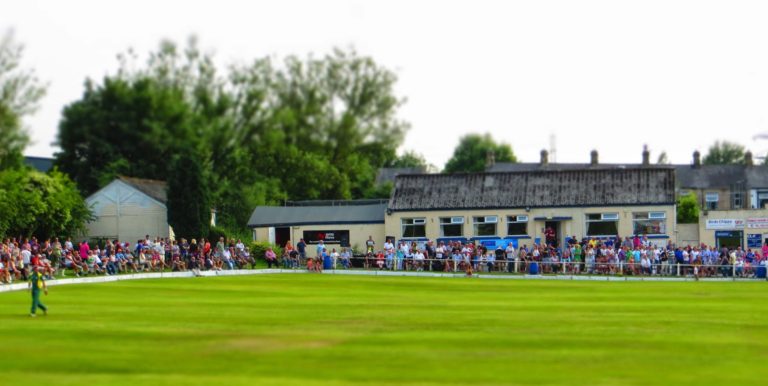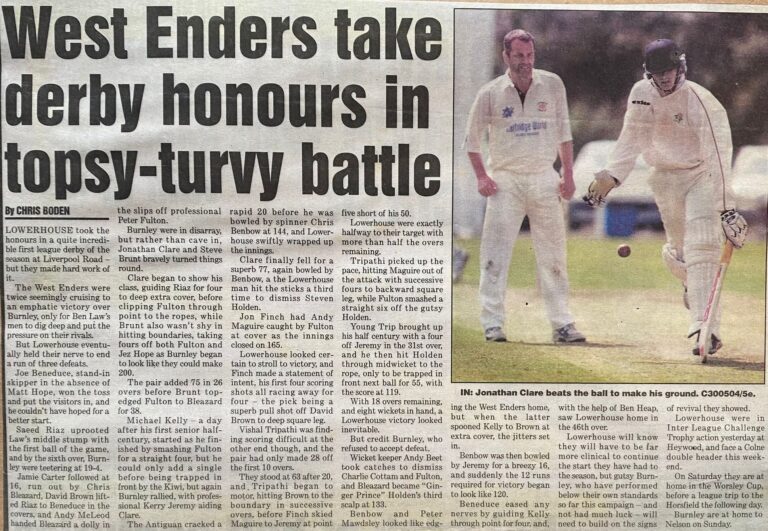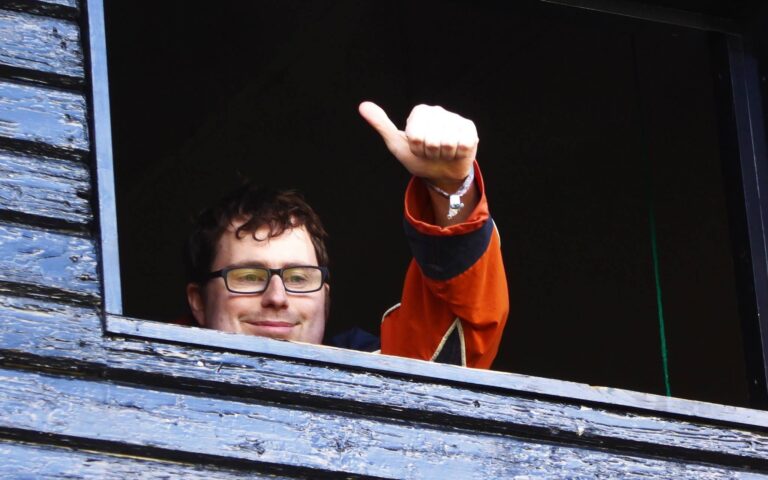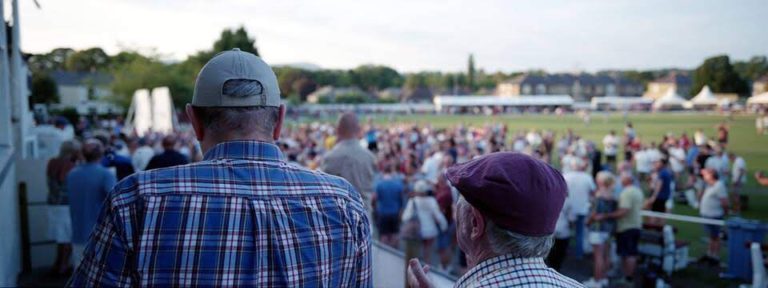1877: Athletics: More successful than the greatest enthusiast might expect

That was how the Burnley Gazette described the Athletics Festival held at Lowerhouse on 30th June 1877, in a long-winded and perhaps not entirely unbiased report. They stated that the weather was extremely fine, the meeting had attracted prize-winners from Lancashire and Yorkshire, whose “physical power” seemed to promise “the inevitable growth of the human race” and that the Lowerhouse event was much better than that held at Burnley CC on 21st April. Burnley’s event was dismissed by the Sporting Chronicle of 14th April, 1877 as “a small athletic meeting …, as the prizes are of little value, we do not expect to hear of any “talent” putting in an appearance.”

Between reports in the Gazette, the Burnley Advertiser, and the Sporting Chronicle, we can get a really good picture of the day. An “overwhelming” crowd, possibly at least 4,000 strong, paid £140 at the gate, admission was sixpence or a shilling to stand on the less crowded side of the large square where the events took place. Nelson Prize Brass Band played selections of music from a stage erected at some distance behind the spectators.
There was a large refreshment tent, where Mr. Kenyon of the Tim Bobbin public house provided “ample and satisfactory arrangements for thirsty visitors.” Other tents, run by the club itself, offered “substantial elements of food.”
The excellent condition of “the turf reflected credit on the groundkeeper.” The officials kept the action moving along really well, there were no delays, and “interest did not flag.” The Chronicle does suggest that the organisers should devise a telegraph board to show the results of contests, as “the ring was often encroached upon by individuals” seeking information.
The LHCC Cricketers’ race this year had been shortened to 100 yards. 4 ran, Moses Starkie won with William Greenwood second. As in 1876, first prize was a cricket bat, and second prize was a pair of cricket shoes, hopefully not the same ones. Incidentally, this is the James Lillywhite XI who had just returned from what is considered the first Test tour of Australia, sporting what was no doubt the very latest in cricketing gear.

The value of the first prizes had been increased substantially for 1877, probably in an attempt to attract the best men in a competitive market and, unlike in 1876, there is no mention of prizes of teapots etc., the reports just give a monetary value, and there was no event for professionals. The most valuable race was the half mile, with a first prize worth £9, which Burnley’s John Harling made sure he won this year, having been foolishly pipped at the post last year.
The £7 prize for the mile was won by A. Smith, also of Burnley. Second place went to H.A. Murphy of Owen’s College, which eventually became Manchester University.
The press, possibly not entirely accurately, described all the events as keenly contested, particularly the 100 yards sprint final. With 40 entrants, several heats were needed to reduce the field to 6 finalists. Lowerhouse CC’s Moses Starkie won a heat but didn’t make the final. The “clever winner by 3 inches” was J.S. Hoyle of Cloughfold, who “by an effort almost superhuman threw himself on the tape” in front of W.L. Taylor of Haslingden, who was the scratch man. They won £6 and £2 5s respectively.

A truly exciting event must have been the first ever bicycle race at Lowerhouse Athletics, these were cycles with a large front and a small back wheel. This was a 2 mile event, 14 entered and there were two heats. In heat 1, W.E. Dewhurst of Burnley failed to turn soon enough at a corner, ran into spectators and the axle of the back wheel snapped. There was no mention of damage to Dewhurst or the spectators.
The two scratch riders, D. Dixon of Manchester, in heat 1 and J. Cockerill of Heyworth, in heat 2, both won through easily, and in the final the other riders, despite being given long starts, soon gave up, leaving the two to fight it out. According to the Gazette the crowd excitement was intense, but Dixon, being a more experienced competitor, hogged the inside lane and “out-generalled” Cockerill to take the £5 first prize.
The high pole leaping turned into an exhibition by George Barker. There were only three competitors. The bar started at 7 foot and J. Cowell of Fleetwood failed at 8’9”, leaving two experienced campaigners G. Barker and W.E. Miller, both of Bacup, to entertain the crowd. Miller failed at 9’3”, Barker carried on and cleared 9’11” and then 10’3”. The bar was then balanced on top of the two poles giving a maximum possible height of about 10’6”, which Barker failed three times to clear. At the time the world record, held by E. Woodburn of Ulverston, was 10’7”. Barker was “loudly cheered” but for all his efforts, he only won a prize worth £3, with £1 going to Miller.
At the end of another very successful event, most of the crowd stayed on and Nelson Prize Brass Band played for dancing, which seems to indicate that there were again plenty of ladies present.
Although receipts were a very healthy £180, the cost of putting the event on had doubled to £112, so the profit of £68 was only about the same as the previous year. Still, after five successful years, the club must have thought this rich source of income would continue indefinitely. They were wrong. Follow the links to our website to read how in 1878 their world was turned upside-down and about 1878’s two unfortunate Athletic Galas.
ac 9/9/2022
1877 Results, Winners and Runners-up only
Cricketers’ Race; 1. Cricket Bag £1 1s. Moses Starkie, 2. pair of cricket shoes, 12s 5d William Greenwood
100 yards handicap; 1. value £6, J.J. Hoyle, Cloughfold, 2. value £2 5s W.L. Taylor, Haslingden
440 yards flat; 1. value £7 J.H. Groves, Oswestry, 2. £2. 10s G.H. Thompson, Haslingden
2 mile bicycle race; 1. value £5, D. Dixon, Manchester, 2. £2 2s. J. Cockerill, Heywood
Half mile flat; 1. £9 J.W. Harling, Burnley, 2. £3 3s. R. Jackson, Whitworth
250 yards for under 18s; 1. £2.10 J.H. Price, Rawtenstall, 2. £1. T. Astin, Padiham.
High Pole Leaping; 1. £3 G. Barker, Bacup, 2. £1, W.E. Miller, Bacup
Mile flat; 1. £7, A. Smith, Burnley, 2. £2 10s. H.A. Murphy, Owen’s College
Sources :
Burnley Gazette and the Burnley Advertiser both of 7th July, and Sporting Chronicle of 14th April and 4th July 1877, via British Newspaper Archive
LHCC archive
Lillywhites XI https://en.wikipedia.org/wiki/English_cricket_team_in_Australia_and_New_Zealand_in_1876%E2%80%9377





